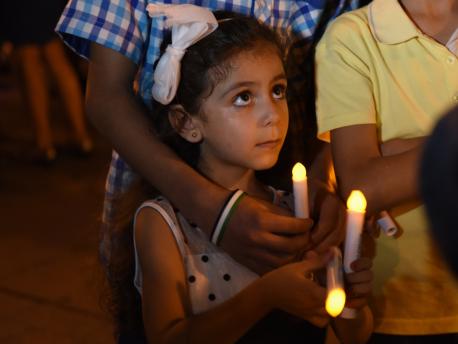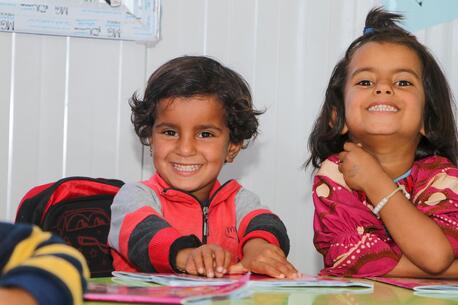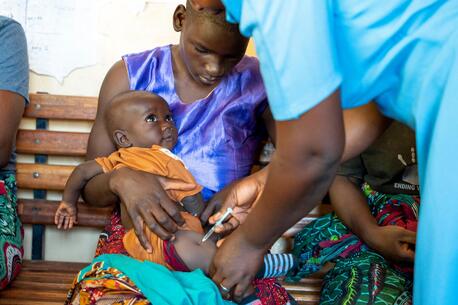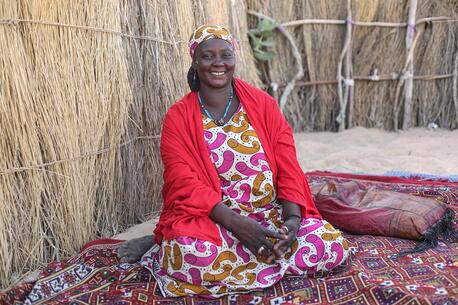
Working to Welcome Refugees From Coast to Coast
More than 40 governors have raised their hand to receive refugees in 2020.
In September, the White House issued an executive order requiring state and local governments to consent in writing to the resettlement of refugees in their respective state or municipality.
As of January 16, 42 governors — 19 Republicans and 23 Democrats — and approximately 100 local governments had agreed to welcome refugees. This bipartisan showing of support demonstrates both moral compassion and a strategic understanding of the valuable role refugees occupy within our nation.
Bipartisan support for refugees demonstrates compassion and recognizes their valuable contributions
More than 25 million people worldwide are registered as refugees, and more than half of those registered are children. Refugee children are incredibly vulnerable — not only have they been uprooted from their homes and communities; many have experienced or witnessed grave violence. They need and deserve special protection from abuse, exploitation and discrimination.
In December, the Los Angeles City Council adopted a "Welcoming City" Resolution, affirming support for refugees and acknowledging their invaluable contributions to the community. UNICEF UNITERs called on the Council to pass the resolution to underline the cultural richness and economic strength that refugees and immigrants bring to Los Angeles. "Many years ago, all Americans, unless they were Native Americans, were refugees or immigrants to this country," noted Councilman Mitch O'Farrell.
Utah was settled by refugees fleeing religious persecution. We will continue to open our arms to individuals and families fleeing persecution and war - and hoping for a better life. #utpolhttps://t.co/198zPDUUSk
— Gov. Gary Herbert (@GovHerbert) November 1, 2019
Governor Gary Herbert (R-Utah) was one of the first to confirm his state's desire to continue welcoming refugees. He even went so far as to ask for more refugees to resettle in Utah.
In a letter to President Trump dated October 24, 2019, Herbert wrote: "Those refugees who resettle in Utah become integrated and accepted into our communities. They become productiive employees and responsible citizens. They become contributors in our schools, churches and other civic institutions.... This marvelous compassion is simply embedded into our state's culture."
Today, we announced our consent to initial refugee resettlement in Missouri in response to Executive Order 13888 signed by President Trump.
— Governor Mike Parson (@GovParsonMO) December 31, 2019
--https://t.co/5FNNRLCLIipic.twitter.com/TxbAcARUkc
Across the country, state and municipal governments are stepping up to welcome refugee families. Governor Mike Parsons (R-Missouri) announced in December that his state will continue to accept refugees for resettlement.
Governor Ned Lamont (D-Connecticut) responded to the executive order with a written statement saying, "Connecticut will continue welcoming those escaping persecution and upholding the long tradition of the United States as a place that treats every human being with dignity and respect."
Attacking refugees does nothing to make our communities stronger, and in fact only achieves the opposite. Connecticut will continue welcoming those escaping persecution and upholding the tradition of the US as a place that treats every human with dignity. https://t.co/8rqLM4eiYo
— Governor Ned Lamont (@GovNedLamont) December 11, 2019
Since the U.S. Refugee Resettlement Program was created in 1980, the United States has resettled more than 3 million people. But in fiscal year 2020, the United States plans to admit a maximum of 18,000 refugees — the lowest annual total since the resettlement program began.
UNICEF USA urges all Americans to extend a warm and generous welcome to the newest arrivals
Refugee children have already endured hardship and suffering before arriving in the United States. Once they and their families have been vetted and approved by the U.S. Government, Americans must show them care and compassion, not rejection.
While the country waits for a final decision on the limits of refugee resettlement, UNICEF USA urges all leaders and citizens alike to remember the origins of our nation of immigrants and extend a warm and generous welcome to the newest arrivals. #RefugeesWelcome
Help protect refugee and migrant children.
Top photo: At Dag Hammarskjold Plaza in New York City in September 2016, a young girl from Syria attends a candlelight vigil in support of child refugees uprooted from their homes around the world by conflict, violence, poverty, extreme weather and drought. © UNICEF/UN032516/Markisz


